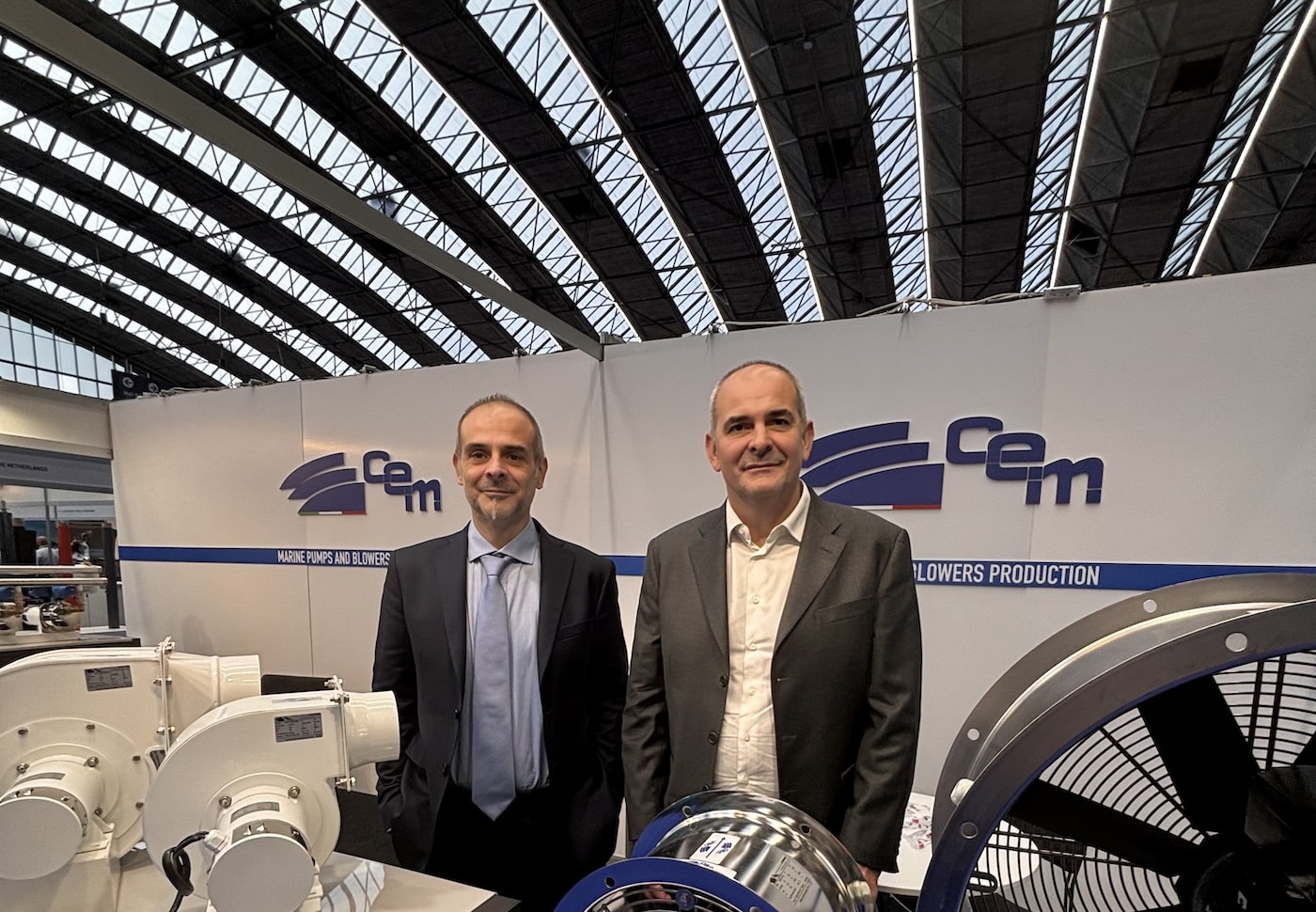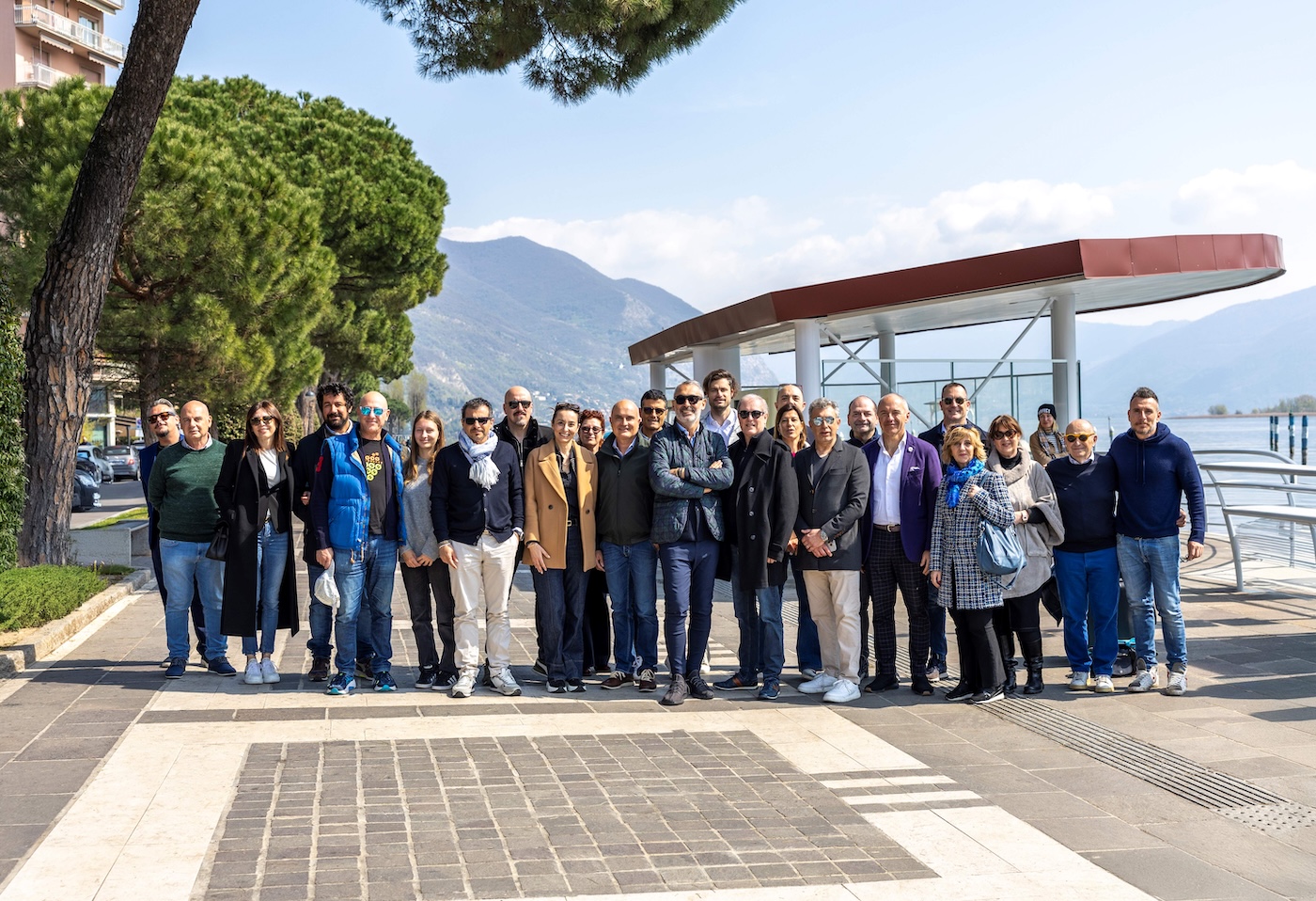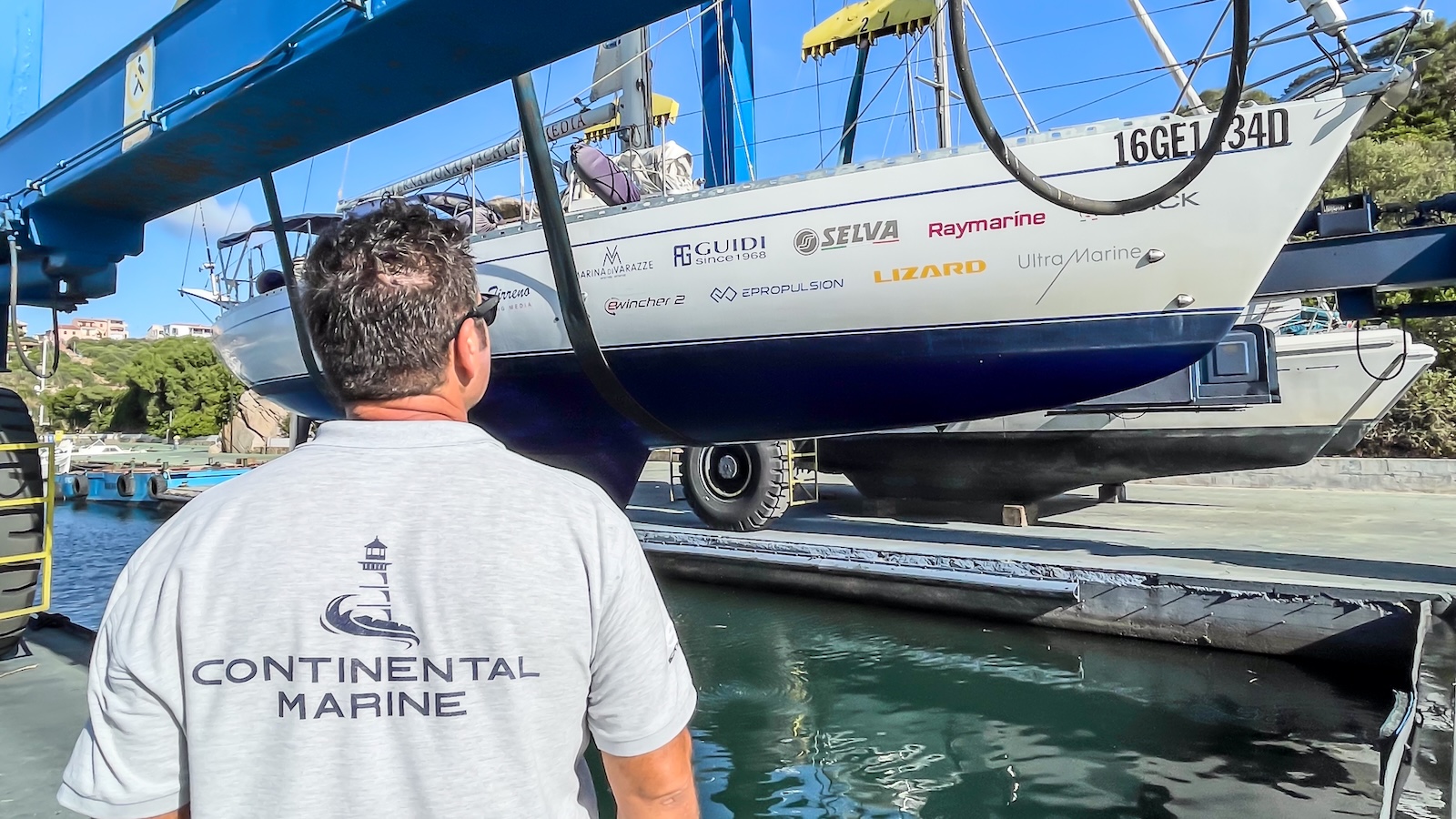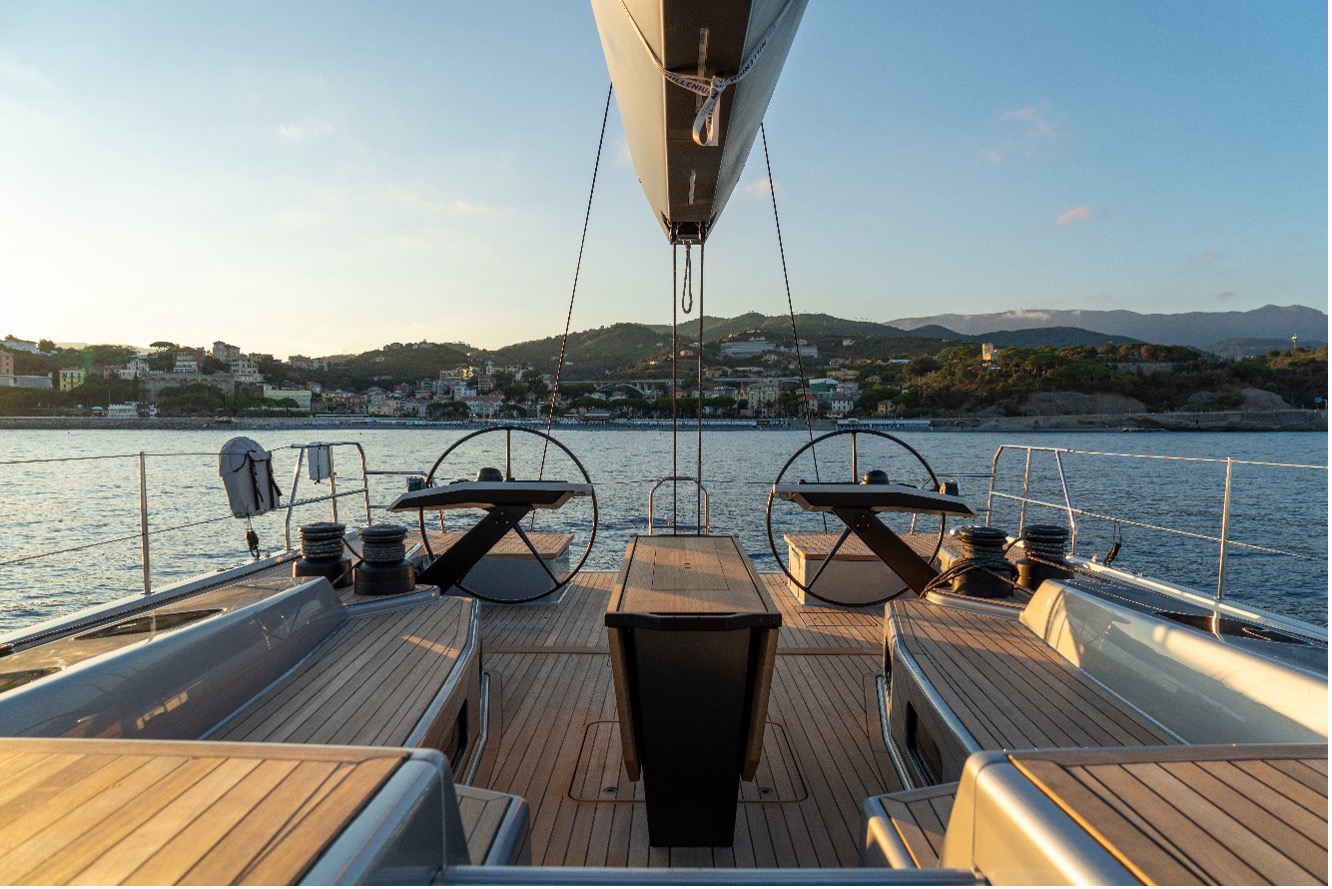In the second half of the 1800s rubber was about to become the main player in a technological revolution destined to influence industrial and social evolution in the years to come.
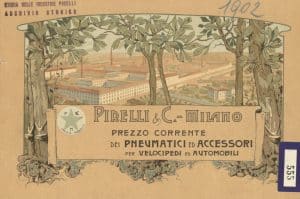
A group of progressive businessmen understood the potential of this innovative material and then undertake new manufacturing activities. Among them was Italian engineer Giovanni Battista Pirelli, who, in 1872, established the company “G.B. Pirelli & C.” in Milan, Italy’s first factory to process “caoutchouc” latex for the production of rubber items.
When speaking of Pirelli there is immediate thought of car tires, from the first “Ercole” patent in 1901 to the high-performance “P ZERO” of the present day and the tires mounted on the racing cars of the most prestigious automobile competition for which Pirelli is the sole supplier. However, the “Long P” factory has been the protagonist of significant historical milestones in different product sectors, including those for the sea and recreational boating.
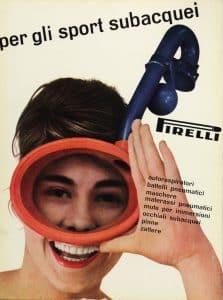
The Italian factory’s first manufactured marine items date back to the late 1800s with the production of primordial swimming belts and latex swim caps. It was in the early postwar period with the establishment in 1948 of the sister company Seregno that Pirelli strengthened its interest in latex marine products. In the early 1950s, technologies were developed to produce swimming fins, masks and wetsuits for underwater activities, children’s life jackets and inflatable mattresses. In this decade, also thanks to the economic boom, interest grew in “inflatable rafts” for recreational use, a practical and inexpensive way to experience seaside vacations from a different perspective, namely on the water. From those primordial “inflatable rafts” that had made their debut as military means in the Great War, the technology was soon ripe to develop a type of watercraft for recreational use that could be assembled for cruising and disassembled for easy transport: the inflatable boat.
The first dinghy manufactured by the sister company Seregno was the PIRELLI NAUTILUS, made with an elliptical-shaped inner tube and a rubberized canvas bottom. This unmistakable orange-colored boat with blue trim featured an integrated bellows for inflation and aluminum oars. The NAUTILUS was destined to become an icon of Italians’ seaside holidays, insomuch that the news magazine “Fatti e Notizie” published by Pirelli, devoted an article to it in its June 1954 issue.
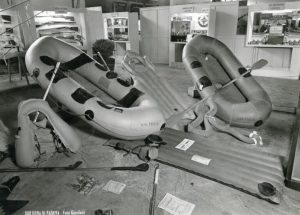
The Italians’ desire for boating became unstoppable, oars were no longer enough and the need for an outboard engine arose: the natural evolution of the dinghy was the PIRELLI GABBIANO, built in the late 1950s. It was an inflatable boat with a transom designed to accommodate an outboard up to 3.5Hp with a detachable keel and furling wood planking bottom. At 2.6 meters long and 0.95 meters wide, it could carry 2-3 people and, once disassembled, could be easily transported in a bag. In 1958 the “JO” made its debut. This was a versatile inflatable boat made of rubberized canvas with wooden frames, simple to assemble and disassemble and easy to transport; it could accommodate three or four people with the peculiarity of running under motor with the outboard, or under sail once the mast and appropriate outriggers were mounted.
An article titled “The Boat Workshops” appeared in issue No. 4 of 1958’s “Fatti e Notizie,” devoted to describing how PIRELLI inflatables were manufactured:
“Raw materials for the construction of pneumatic boats are cotton fabric, rubber and special mastics. The first process the fabric undergoes is rubberizing on both faces, which is necessary to make the cotton waterproof. The rubberized fabric, either in a single layer or in several overlapping layers depending on the types of boats, is then placed under a cutter where following the track of special templates, it is cut into the desired shapes. The flaps to be glued are first soluited with a special cold self-curing mastic, then juxtaposed and finally “rolled” so that they adhere perfectly. A soluitized rubberized strip is placed over all joints to act as a joint cover. Using the same system, the accessory parts (valves, rudder plates, rings, etc.) are glued together. The boats thus produced undergo watertightness and airtightness examinations before packing and shipping.”
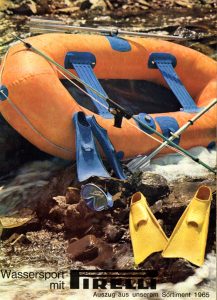
In the early 1960s, the Seregno company reached the technological and production maturity to make increasingly sturdy and sophisticated demountable boats, bringing to debut in 1963 the range of PIRELLI rigid-keel LAROS inflatable boats, which became in the following years the benchmark means of “mass marine motorization of Italians”. Initially, the fleet consisted of the LAROS 10 (L. 3.35 mt. max 18Hp) and the LAROS 25 (L. 3.55 mt. max 30Hp), but over the next four years the range evolved to include 5 models: from the smallest LAROS 5 (L. 3.05 mt. 2-3 people, max 7Hp) to the intermediate range with the LAROS 8 (L. 3.10 mt. 3-4 people, max 15Hp), the LAROS 15 (L. 3.35 mt. 4-5 people, max 22Hp) to the larger LAROS 30 (L. 3.80 mt. 5-6 people, max 40Hp) and LAROS 40 (L. 4.30 mt. 7-8 people, max 50Hp). The new inflatable boats changed their livery from the historic orange color to gray, with blue trim and inserts. Also new was the Nylon and Neoprene-Hypalon rubberized fabric for the tubulars and bottom, which improved resistance to abrasion and hydrocarbons, while increasing structural strength. The wooden parts were made of mahogany marine plywood. (Source “Fatti e Notizie” No. 3, 1967).
Among the professional-use inflatable boats produced by Pirelli for patrol and rescue, mention should be made of the LAROS 80, a 6-meter-long inflatable with a 2.40-meter beam that could be powered by outboards up to 80Hp. In 1969, three men aboard a LAROS 80 christened “Celeusta,” properly equipped and fitted with sail rigging, made a crossing of about 5,000 miles in the Pacific Ocean from Peru to French Polynesia. The successful outcome of this arduous marine endeavor led by Mario Valli highlighted the seaworthiness and sturdiness of this boat so much so that, in order to meet the demands of enthusiasts, in 1970 Pirelli also had to include the LAROS 80 among its standard recreational boats. Meanwhile, the complete series of LAROS boats obtained R.I.N.A. approval (source “Fatti e Notizie” No. 1 and No. 2, 1970).
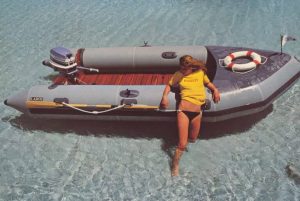
During the 1980s, PIRELLI’s comprehensive range of inflatable boats met the needs of many inflatable boaters, making a name for itself even outside Italy. The LAROS 30 and LAROS 40 “traversing” boats were joined by the LAROS COMMANDO, a sturdy 4.30-meter-long RIB with 50-centimeter tubulars and 1,200 kilograms of capacity, suitable for demanding navigation and intensive use. Also renewed was the series of “sea runabouts” or Pirelli’s handy and cheaper boats (public prices from 340,000 to 920,000 liras), valuable companions of summer holidays at the sea and always recognizable thanks to the historic orange color of their livery. Among them was the PRAM S, 2.80 meters long and suitable for 3-4 people with a recommended 6Hp outboard. Thanks to its weight of only 32Kg and pneumatic keel, it was very maneuverable, easy to disassemble and transport. The LAROS 340, defined as an “all-sea” craft because of its feature of being all open to optimize interior space, was 3.40 meters long and 1.55 meters wide; it could carry 5 people with a 15Hp outboard propulsion. The smallest was the DINGHY 240, 2.45 meters long and 1.30 wide. It could carry 3 people and was arranged to fit an engine mount for a 1.5Hp outboard. Its weight of only 20Kg made it particularly easy to handle, also ideal as a tender. Despite being the smallest in size, it retained the same build quality and rubberized fabric as the larger ones, making it a durable and reliable craft. (source “Fatti e Notizie” No. 6 of 1978).
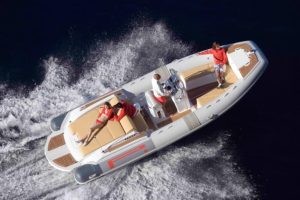
During the 23rd Genoa Boat Show, the LAROS MASTER, an inflatable boat with a new squared bow and gray livery with red trim, 4.50 meters long and a beam of 2 meters capable of carrying up to 9 people with a maximum power of 55Hp, was presented. The LAROS MASTER was the forefather of a new generation of demountable inflatable boats, designed by the Pirelli Group together with its subsidiary Moldip Seregno to measure up to the performance of the emerging semi-rigid inflatable boats. This rigid keel boat was characterized by a special non-deformable rubberized fabric with high mechanical strength that allowed for an accentuated “V” of the well-tensioned hull, improving seaworthy features even in rough seas, with a behavior similar to “semi-rigid” counterparts. (Source ” Fatti e Notizie No.8 of 1983).
In the 1990s, after the closure of Moldip Seregno, Pirelli decided to take a break in the production of inflatable boats. It was necessary to wait until the new millennium to find the “Long P” on the water again, thanks to the collaboration with TecnoRib (now Sacs Tecnorib), which currently build luxurious RIBs (Rigid Inflatable Boats) under the PIRELLI and P ZERO brands licensed by the Milan-based Group.
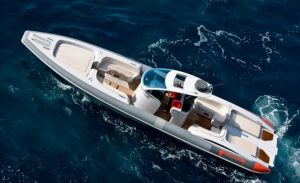
The water debut of the first P ZERO semi-rigid inflatable boat, the 770 model, took place in May 2006 in the Gulf of Santa Margherita Ligure during the PIRELLI sailing regattas. In a short time, the “Long P” brand made a big comeback at sea with luxurious RIBs that combined technology and refined design. The Speedboats range was born, starting from the smaller 8-meter PIRELLI 770 open and 9-meter PIRELLI 880 open, to the larger PIRELLI 1100 and PIRELLI 1400 of 11 and 14 meters respectively, both offered in open and cabin versions.
2017 saw the launch of the PIRELLI 1900, the flagship of the range, which with a length of 18.5 meters redefined the boundaries of luxury RIBs. It is a sporty 1600HP boat fitted with bow thrusters , built with innovative materials and the latest on-board technologies, without sacrificing the style and unique design that distinguishes the entire PIRELLI-branded fleet.
In early 2020
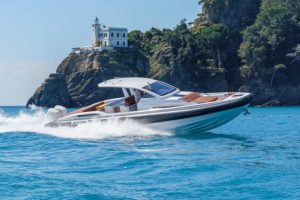
TecnoRib introduced the new Walkarounds range with the PIRELLI35, PIRELLI 42 and PIRELLI50, measuring 11, 13 and 15 meters respectively, which can be powered by inboard or outboard engines. The new range is designed with ample space and luxurious deck fittings to ensure a comfortable life on board without sacrificing the performance guaranteed by the water lines of the hull designed by the Swedish Mannerfelt Design Team. The water debut of the PIRELLI 42 took place in 2020 during the 60th Genoa Boat Show, while the PIRELLI 35 debuted the following year. Both models were so successful that the PIRELLI 35 won the prestigious Red Dot Award 2022.
In the wake of its success, the PIRELLI 50 was built and presented during the 62nd Genoa Boat Show. This is the flagship model of the Walkarounds range, which, in addition to offering luxurious and relaxing en plein air spaces, also features two comfortable cabins below deck.
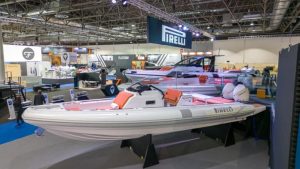
The beginning of 2023 saw the launch of the PIRELLI 30, which made its world premiere at the just ended Düsseldorf International Boat Show. The new entry in the PIRELLI-branded walkaround Speedboats line is a day cruiser designed exclusively in an outboard version to emphasize the brand’s adrenaline-pumping and sporty soul. The newcomer is available in two bow configurations: a walkaround version to prioritize conviviality and socializing on board, and a version that echoes the Mediterranean tradition of using the bow as a sundeck.
Not only amusement and relaxation. The world of competition also reinforces the link between Pirelli and water. Since 2018, in fact, the Italian company has been co-title sponsor of Luna Rossa™, and the satisfactions have not been slow in coming. These include winning the Prada Cup 2021, which then allowed LUNA ROSSA PRADA PIRELLI to fight until the last race in the 36th America’s Cup. Since 2022, Pirelli has also been the main and lead sponsor of “Alla Grande Pirelli,” the Class40 with which Milanese sailor Ambrogio Beccaria finished second in his category at the historic Route Du Rhum, a solo, non-stop race from Brittany to Guadeloupe across the Atlantic. Pirelli will continue to write important chapters in the book of maritime sports with both boats, symbols of two sporting and technological challenges capable of taking Italy and the PIRELLI brand around the world.
This is how from the distant 1950s to the present day, the “Long P” continues to shine proudly on the waves, making PIRELLI-branded boats and yachts ply the sea with style and elegance.
Thanks to the Pirelli Foundation which has kindly provided the photos from the historical archive for the writing of this article. The Foundation’s website can be viewed at this address https://www.fondazionepirelli.org/it/




















